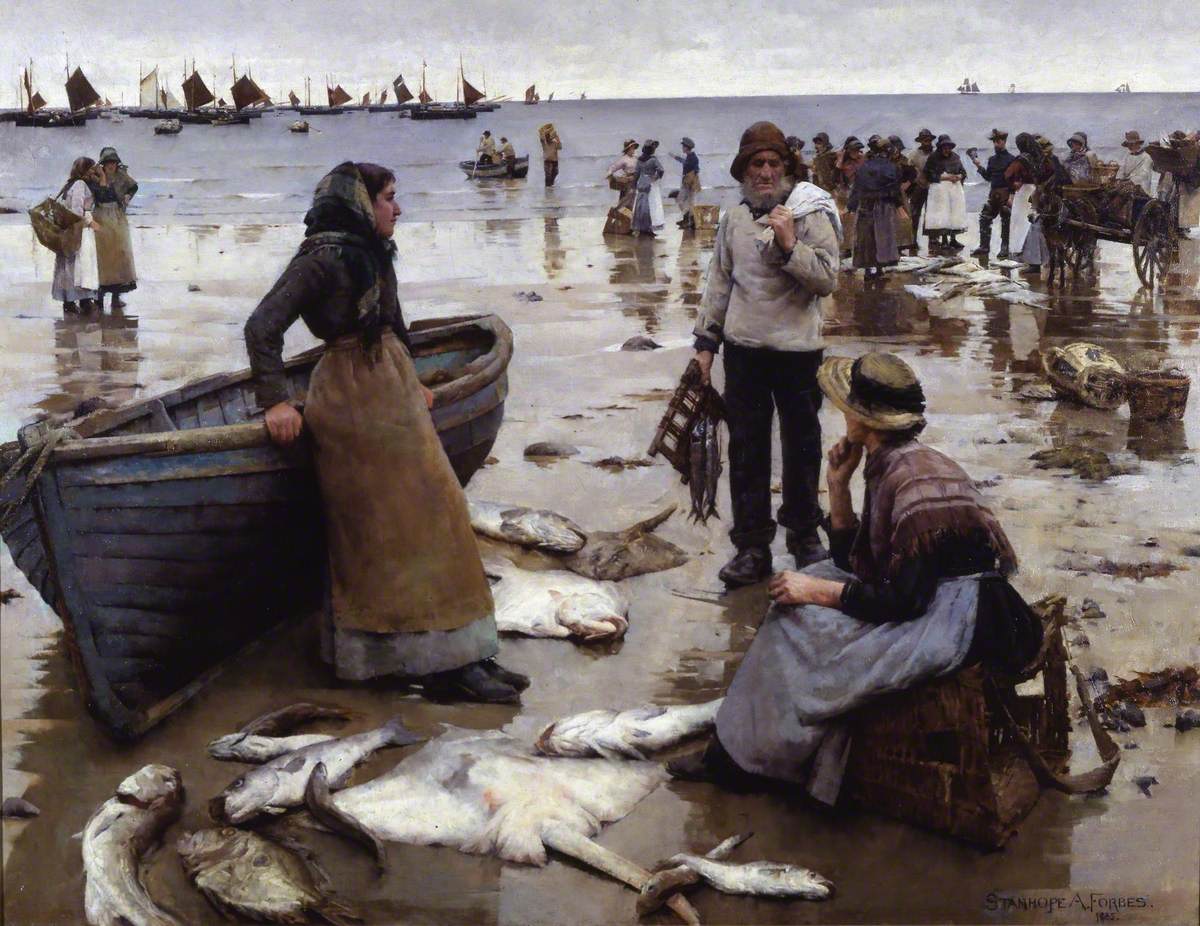An interesting paper by Beranrd Deacon titled, Imagining the Fishing: Artists and Fishermen in Late Nineteenth Century Cornwall
Read the full paper here:
Department of Lifelong Learning, University of Exeter, Exeter, UK.
Abstract:
The focus of postmodernist historians on language and representation
clashes with the more traditional approach of the social historian to material
structures and processes. This article adopts the suggestion of Wahrman that a
'space of possibilities' exists where these apparently competing perspectives might
be connected. The concept of a 'space of possibilities' is pursued through a case
study of a marginal group, the fishing communities of west Cornwall in the late
nineteenth century. The article explores points of contact and contrast between the
artistic and the fishing communities, between the painterly gaze and the subjects of
that gaze. It is proposed that, while the artistic colonies and their representations
might be explained as a result of discourses reproduced in the centre, their specific
choice of location in Cornwall can also be related to the local economic and social
history that granted them a space of possibilities.
An interesting paper by Beranrd Deacon titled, Imagining the Fishing: Artists and Fishermen in Late Nineteenth Century Cornwall
Read the full paper here:
Department of Lifelong Learning, University of Exeter, Exeter, UK.
Abstract:
The focus of postmodernist historians on language and representation clashes with the more traditional approach of the social historian to material structures and processes. This article adopts the suggestion of Wahrman that a 'space of possibilities' exists where these apparently competing perspectives might be connected. The concept of a 'space of possibilities' is pursued through a case study of a marginal group, the fishing communities of west Cornwall in the late nineteenth century. The article explores points of contact and contrast between the artistic and the fishing communities, between the painterly gaze and the subjects of that gaze. It is proposed that, while the artistic colonies and their representations might be explained as a result of discourses reproduced in the centre, their specific choice of location in Cornwall can also be related to the local economic and social history that granted them a space of possibilities.
The Art of Fishing in Cornwall – A Historical and Contemporary Perspective
Cornwall, with its stunning coastline and rich maritime history, has always been a significant hub for the fishing industry. The relationship between artists and fishermen in this region, particularly during the late 19th century, offers a fascinating lens through which we can explore the narrative of fishing—not just as an industry but as a way of life steeped in culture and community.
Capturing Life by the Sea
Historically, artists such as Stanhope Forbes and Henry Scott Tuke set up their easels along the Cornish shores, capturing the daily lives of fishermen through their romanticised depictions. Their works vividly illustrate the rigours of fishing, lounging fishermen, and the idyllic scenery of quaint fishing villages. However, these artistic portrayals often glossed over the hardships faced by these communities, presenting a timeless picture that sometimes overlooked the socio-economic realities of the time.
Among the more contemporary artists, Alfred Wallis stands out for his unique, naïve approach that transformed his personal experiences as a fisherman into captivating works of art. His paintings evoke not just the visual beauty of the sea but also resonate with the fisherman's spirit and the local community's struggles. Similarly, artists like Colin Scott and Bernard Evans have continued this tradition, drawing from the landscape and the lives of those who inhabit it to tell stories about the fishing communities.
As we navigate through the past, it’s essential to connect these artistic reflections with the lived experiences of the fishermen. Cornwall's fishing communities, particularly in Newlyn and St. Ives, grappled with the rise of industrial fishing practices and economic changes, leading to a decline in traditional methods that had defined their lives. The introduction of railway connections in 1859 opened up new markets, transforming fishing from a local necessity to a more commercial enterprise.
Bridging the Past and Present
Fast forward to today, the fishing industry in Cornwall faces different challenges, such as overfishing and environmental sustainability. The narrative has shifted significantly, moving from a simple portrayal of rustic life to a more nuanced examination of contemporary issues affecting fishermen. Modern artists are now engaging with themes that reflect both the beauty of Cornwall’s landscapes and the pressing realities these communities face in an age of climate change and industrialisation.
Artists like Ken Howard, Tim Hall, and Morgan Penn are redefining the fishing narrative through their works, often addressing the ecological ramifications of fishing practices and advocating for sustainability within the industry. Howard’s impressionistic style brings to life the fleeting moments of fishermen at work, while Hall and Penn incorporate modern perspectives that highlight the evolving challenges faced by coastal communities. This new wave of artistic expression serves as a bridge from the past, illuminating the evolution of fishing from quaint tradition to a critical focus on environmental responsibility.
Continuing the Conversation
The dialogue between artists and the fishing industry in Cornwall continues to thrive, representing an intersection of history and ongoing shifts in cultural, ecological, and societal contexts. Through their art, modern artists not only honour the traditional fishermen but also amplify current voices and concerns, ensuring that the narrative remains relevant and reflective of today’s world.
As we explore art through the gaps of history and modernity, we uncover layers of meaning that connect us to both the past and the present, fostering a deeper appreciation for the exquisite yet complex tapestry of the Cornish fishing life.
